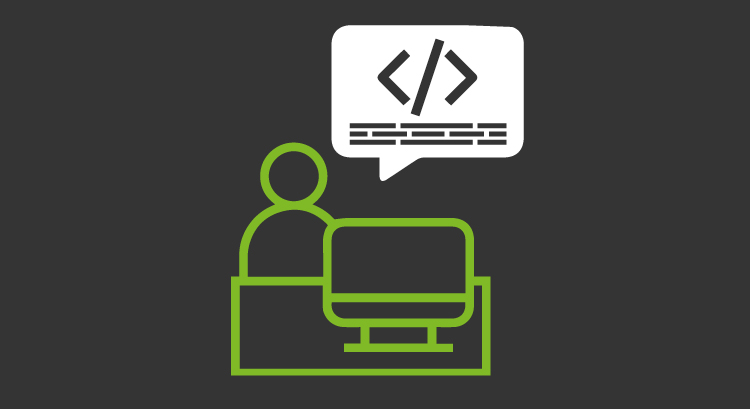Abbreviations, acronyms … What is the programmer slang?
Programmer slang is very particular, but it is by no means the exception and that is why in all specialties they have their own jargon. In this article, we will focus on showing its peculiarities. Let’s go!
SMS, MMS and cell phones
You remember the meaning of the three-letter SMS acronym, don’t you? Pandora FMS is capable of sending you alerts by text message so this term appears both in the technical documentation and in the software itself. Although it has mostly been replaced by Twitter, Telegram, etc., this word is still understood by both users and programmers. If we say RCS, does it ring a bell? Let’s have a look.
Abbreviations can have many meanings but in English, SMS means Short Message Service and MMS means Multimedia Messaging Service.
RCS means Rich Communication Services, which became the successor to MMS. RCS are being promoted by Jibe, a division of the company Google®, so stay tuned for this new development for your mobile phones as Jibe seeks to take advantage of existing hardware, but adding new features. The thing is that programmers must include all these names in the source code and think ahead, both for the developers in charge of maintaining the code (for example, IT patches) and for the end users.
Let’s think selfishly
All programming languages allow you to add comments to point out something important, or for didactic purposes (the creators of the programming language themselves must teach their colleagues and include comments in the examples for language learning). That is why we must seek the best possible way so that our ideas are fully understood, either now or in the future.
But here comes the small detail: this must include ourselves. This means adding an important note to programmer slang: write the comments as if you sent a letter to your future self.
Thinking that way, there is a high probability that your ideas will be well interpreted. But, how should you comment on your source code?
Some languages are advanced and seek to formally integrate these comments to compile them together with the program. We already talked about the Python language and we will use it here as an example. That way, when the source code is converted into machine language – ones and zeros – our comments will remain as a software help for other programmers as well as for users.
It is our duty to note that Python also allows comments only to be read by programmers. However, they also have strict rules to write them (these rules are known as PEP 8 and PEP 257).
Abbreviation considerations
With the example we saw at the beginning, this new RCS feature prevents you from using that abbreviation for any use other than to name this technology. The same happens to the reserved words of each programming language, whether they might be commands or declarations. Example such as exit or int (abbreviation of integer, used to declare a numeric variable without decimals) cannot be used for our purposes of saving in writing -and reading- the source code for us human beings.
Some words are consolidated and even have extremely wide meaning in many countries, they are exclusive to the programming language but human abstractions. A notable example here is the word OK. We won’t get into a debate about what each letter means, but the two of them together and their combinations (“Ok”, “oK”, “ok”) express the same idea: “fine”, “positive” or “correct”.
We can add another group of abbreviations not related to hardware technology but to software. It will even be fully understandable to any user, such as, TCP/, etc.
Acronyms
Even today, a significant part of the population knows the acronym HTML. Well, this language has its own system to deal with them (very clever, by the way). Firstly with acronyms -label not used anymore- and secondly with abbreviations:
The <abbr title=”Organization of the Petroleum Exporting Countries”>OPEC</abbr> was founded in 1960.
As we can see, it is actually an acronym but this particular element
<acronym>… </acronym>
was excluded in the latest HTML 5.0 standard. Let’s see then what the acronyms in the vocabulary of programmers are.
Acronyms come from Latin. Its use became popular during the Roman Empire and then spread to many other languages. It consists of simply taking, as we show, the first letter of each word being mindful of its pronunciation letter by letter. These have undoubtedly become one of the main programmer slang elements. What usually happens is that it is pronounced as a word and in the case of programmers, some even become verbs.
Recursive acronyms deserve a special mention. The most famous is GNU (“GNU is Not Unix”) and, although this term is not used directly in programmer slang, it is used at the beginning of each file that contains a script of this language (“Hypertext Preprocessor”). The most recent recursive acronym is YAML (“YAML Ain’t Markup Language”), but originally meant “Yet Another Markup Language”.
Abbreviations and apocopes
Abbreviations are also part of the programmer slang but, on the other hand, they seek to remove at least three letters to make the effort worthwhile. Do not mistake them with the symbols.
For example, the letter “s” is used to indicate seconds, and “ms” for milliseconds, the unit of time measurement most used in computing. Many times abbreviations and symbols are mixed, as it is the case of «mbps» which means «megabits per second».
But wait, there is even more, be careful: while “Mbps” has the same meaning as “mbps”, it is not the same when we use “MBps”, since this means “Mega Bytes per second”!
We finish the example with one more detail: in real and everyday life “megabits per second” is abbreviated as “Mbit/s”, which is not common to use among programmers because both the “/” and the “\” have special uses in programming languages and operating systems.
As for the apocopes, which consist of deleting part of the end of the words, perhaps the most famous case is “COM” to name “communications”, although it has also been used to represent other concepts (their use in programming languages is almost always a reserved word.)
“Numeronyms”
We finish off this section of programmer slang with numeronyms. No, you will not find its definition in the dictionary because its use is very controversial and they refuse to canonize it. As we know, we can represent our Arabic numbers by means of letters (words), but it just so happens that the opposite is possible here too. I will explain.
Obviously, the messages to the end users of any computing program in the world must be in their own native language. Said branch of study and work is called software “internationalization”, very long to say it every time you have to work in this area. Of course it is long, but, do you know that some companies also used “international-enabling” to refer to the work of programming an application in several languages?
The solution, if we want to call it that way, was to name said job i18n, since between the first and last letters there were eighteen characters. Apparently this began when a system administrator created the username “S12n” for the employee Jan Scherpenhuizen for his email account! As the rest of the employees found the idea funny, programmers took it over, but it wasn’t until the mid-90s that it became popular and widely spread:
· Globalization: g11n.
· Japanization: j10n.
· Localization: l10n.
· Europeanization: e13n.
Before saying goodbye, you know Pandora FMS, right? Just in case: Pandora FMS is a flexible monitoring system, capable of monitoring devices, infrastructures, applications, services and business processes.
Want to know more about what Pandora FMS has to offer you? Find out by entering here.
Or if you have to monitor more than 100 devices, you can also enjoy a FREE 30-day Pandora FMS Enterprise TRIAL. Get it here.
And remember that if you have a small number of devices to monitor you can use the OpenSource version of Pandora FMS. Find out more here.

Traductora a francés e inglés. Me encantan las lenguas. Amante de la ropa oversize, la tarta de queso y el chocolate caliente en invierno. Me gusta leer, escuchar música, viajar y explorar cosas nuevas. Mi frase más temida por aquellos que me conocen es “he estado pensando…”
Translator into French and English. I love languages. Lover of oversized clothes, cheesecake and hot chocolate in winter. I like reading, listening to music, travelling and exploring new things. My most feared phrase by those who know me is “I’ve been thinking…”
















